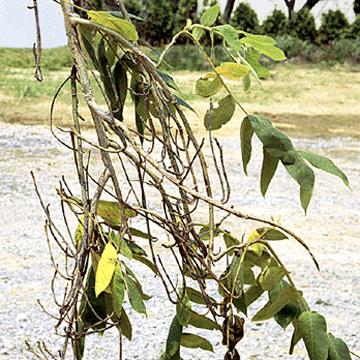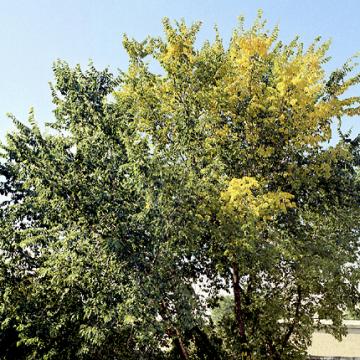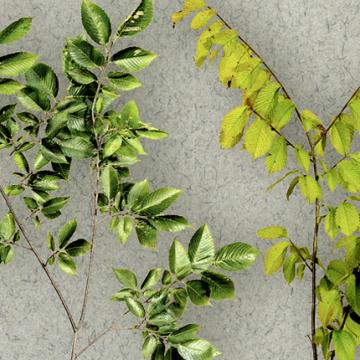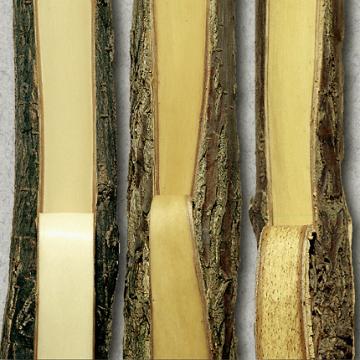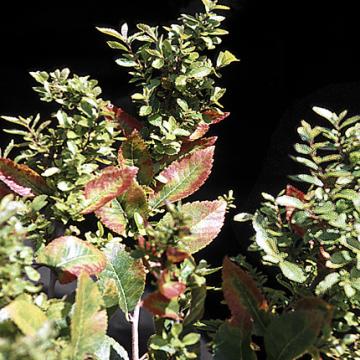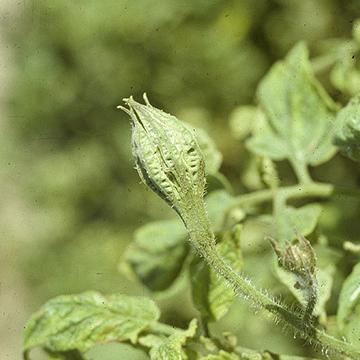DISEASE: Bunch disease (Witches'-broom)
HOST: Butternut
Bunch disease of butternut.
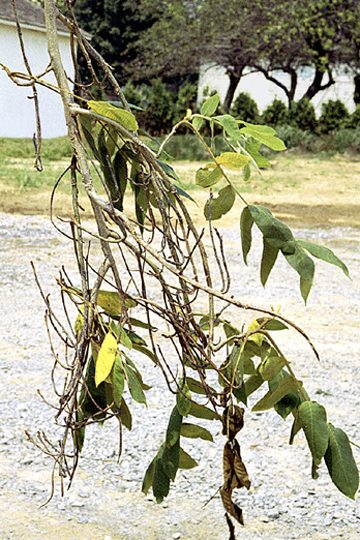
Bunch disease (Witches'-broom) | Butternut
DISEASE: Bunch disease (Witches'-broom)
HOST: Butternut (Juglans cinerea)
PATHOGEN: 'Candidatus Phytoplasma pruni'
PATHOGEN SYNONYM: Phytoplasma X-disease group
SOURCE: W. Sinclair
DISEASE: Elm yellows
HOST: Elm
Symptoms of elm yellows occasionally appear on one branch before others, but more often they involve the entire crown.

Elm yellows | Elm
DISEASE: Elm yellows
HOST: Elm (Ulmus americana)
PATHOGEN: 'Candidatus Phytoplasma ulmi'
PATHOGEN SYNONYM: Phytoplasma Elm yellows group
SOURCE: W. Sinclair
DISEASE: Elm yellows
HOST: Elm
Diseased twig (right) with epinasty, chlorosis, and yellowing of leaves. Sometimes both yellow and green leaves occur on same branch. Healthy branch (left).

Elm yellows | Elm
DISEASE: Elm yellows
HOST: Elm (Ulmus americana)
PATHOGEN: 'Candidatus Phytoplasma ulmi'
PATHOGEN SYNONYM: Phytoplasma Elm yellows group
SOURCE: W. Sinclair
DISEASE: Elm yellows
HOST: Elm
Branches with butterscotch discoloration (center) and necrotic flecks in phloem and vascular cambium (right). Healthy branch (left). Sudden wilt and browning is common with small trees.
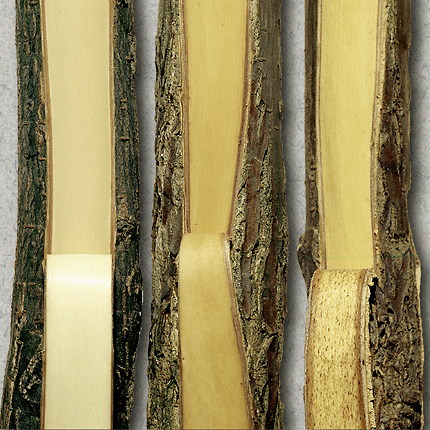
Elm yellows | Elm
DISEASE: Elm yellows
HOST: Elm (Ulmus americana)
PATHOGEN: 'Candidatus Phytoplasma ulmi'
PATHOGEN SYNONYM: Phytoplasma Elm yellows group
SOURCE: W. Sinclair
DISEASE: Elm yellows
HOST: Elm
Elm yellows is characterized by witches'-brooms and stunting. Some cultivars have both yellow and reddish foliar discoloration.

Elm yellows | Elm
DISEASE: Elm yellows
HOST: Elm (Ulmus parvifolia)
PATHOGEN: 'Candidatus Phytoplasma ulmi'
PATHOGEN SYNONYM: Phytoplasma Elm yellows group
SOURCE: W. Sinclair
DISEASE: Elm yellows
HOST: Elm
Late stage of elm yellows disease.

Elm yellows | Elm
DISEASE: Elm yellows
HOST: Elm (Ulmus rubra)
PATHOGEN: 'Candidatus Phytoplasma ulmi'
PATHOGEN SYNONYM: Phytoplasma Elm yellows group
SOURCE: W. Sinclair
DISEASE: Tomato big bud
HOST: Tomato
Characteristic symptoms are swollen, apical stems and stunted leaves. Apical stems are generally thickened and assume a stiff and erect growth habit. Internodes are shortened and flower buds are greatly enlarged.

Tomato big bud | Tomato
DISEASE: Tomato big bud
HOST: Tomato (Lycopersicon esculentum)
PATHOGEN: 'Candidatus Phytoplasma asteris'
PATHOGEN SYNONYM: Phytoplasma Aster yellows group
SOURCE: D. Teakle
DISEASE: Tomato big bud
HOST: Tomato
Symptoms are enlarge sepals that do not separate. Flower buds stay green and do not develop into fruit. Leaves are small and chlorotic.
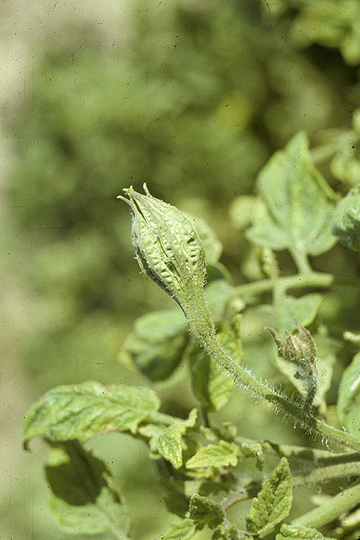
Tomato big bud | Tomato
DISEASE: Tomato big bud
HOST: Tomato (Lycopersicon esculentum)
PATHOGEN: 'Candidatus Phytoplasma asteris'
PATHOGEN SYNONYM: Phytoplasma Aster yellows group
SOURCE: S. Thomson
DISEASE: Tomato big bud
HOST: Tomato
Abnormal flower bud with greatly enlarged sepals. Sepals do not separate, fruit is not produced, and apical growth is upright.
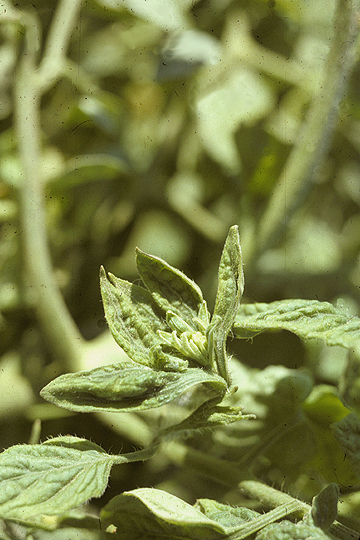
Tomato big bud | Tomato
DISEASE: Tomato big bud
HOST: Tomato (Lycopersicon esculentum)
PATHOGEN: 'Candidatus Phytoplasma asteris'
PATHOGEN SYNONYM: Phytoplasma Aster yellows group
SOURCE: S. Thomson


